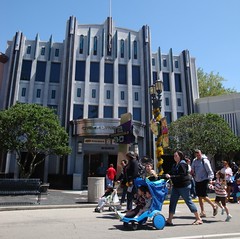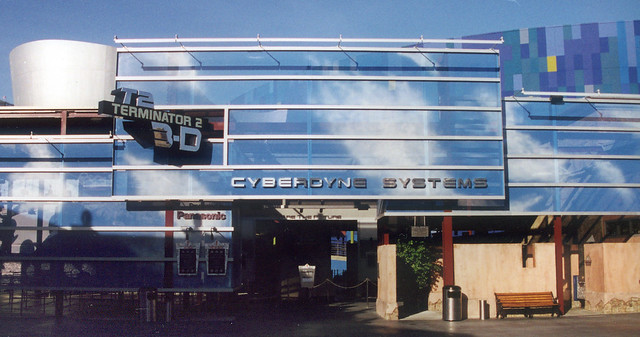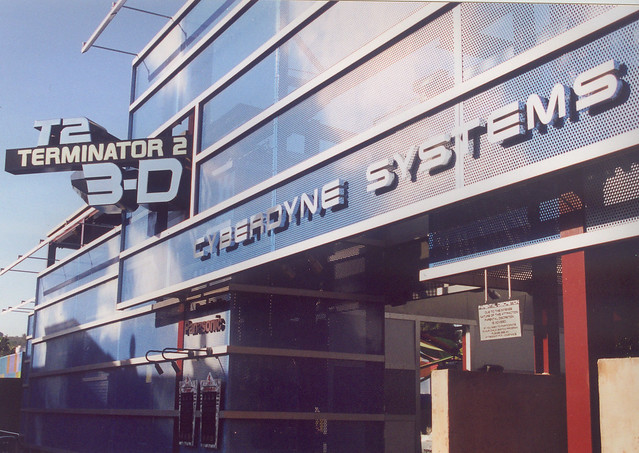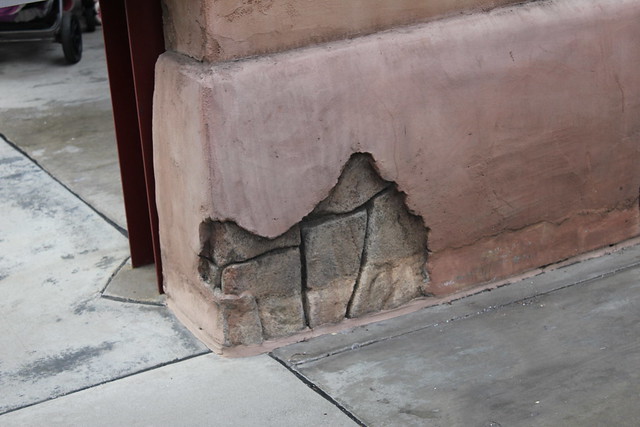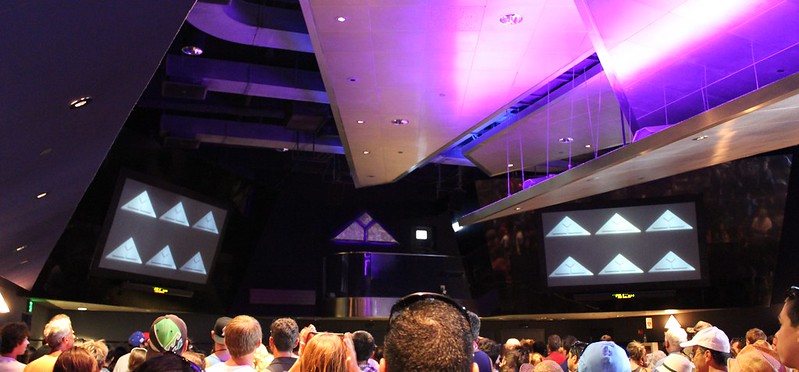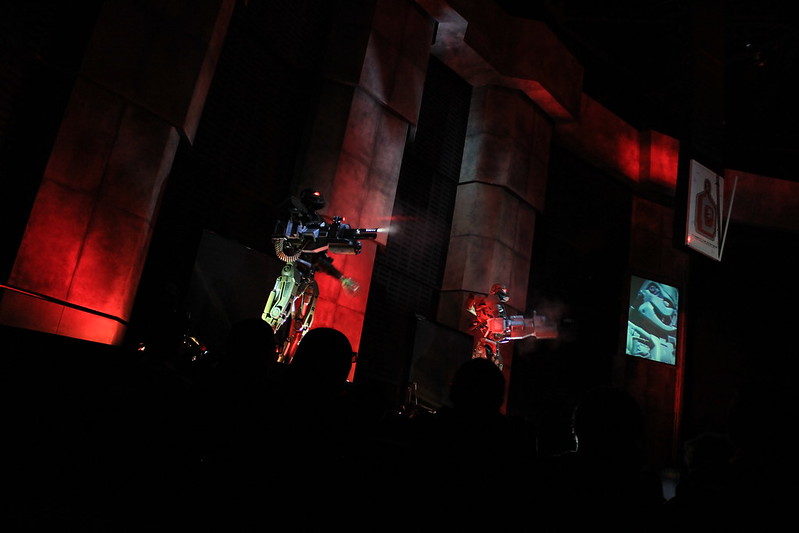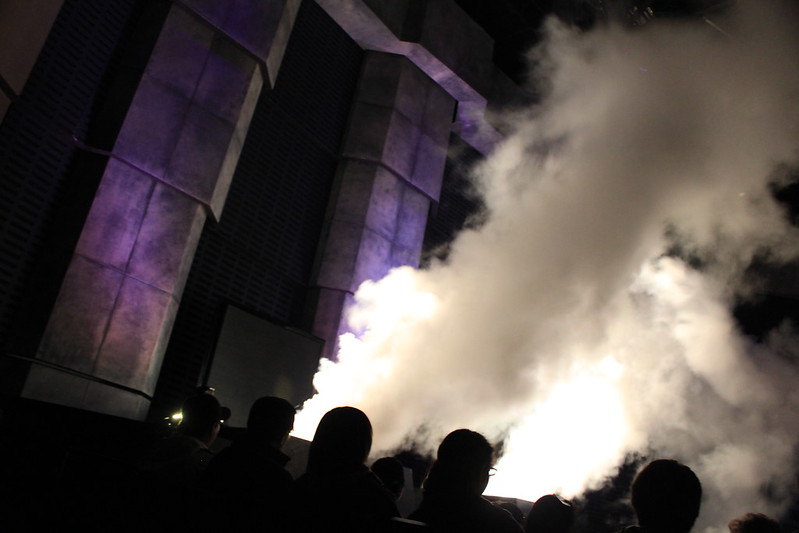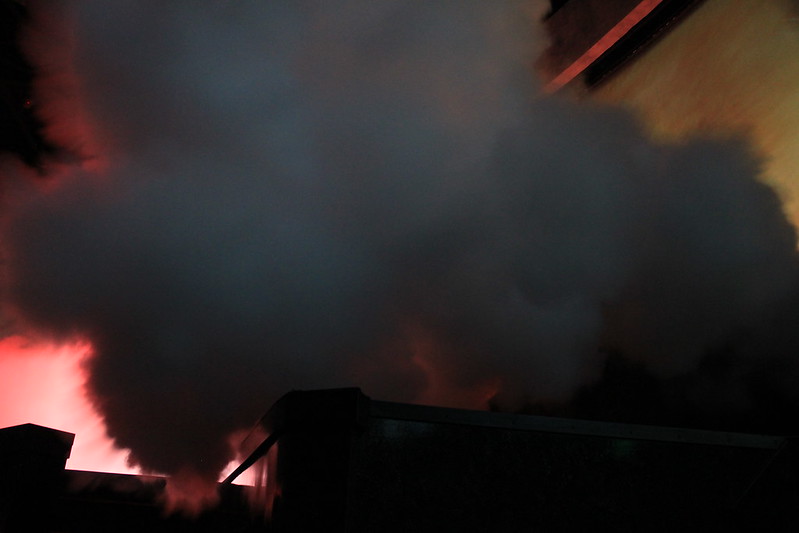
Terminator 2:3D – Battle Across Time originally opened at Universal Studios Florida in 1996 as a major sequel to James Cameron’s hit motion-picture Terminator 2: Judgement Day. Using an innovative combination of 3D film alongside live actors and large-scale theater effects, Terminator 2:3D clearly pushed the boundaries of traditional theme park special effects, spawning copies at Universal Studios Hollywood and Universal Studios Japan to universal acclaim.
However, after years of entertaining theme park guests, Universal Studios has announced the first closure of Terminator 2:3D at Universal Studios Hollywood after a 13-year run to make way for a new, 3D attraction. So now that Terminator is about to be terminated in Hollywood, let’s take a look back at the show’s history and eventual progression over the years as one of Universal’s flagship attractions.



With the success of Terminator 2:3D at Universal Studios Florida and the nearing completion of Universal’s Islands of Adventure, Universal decided to give Universal Studios Hollywood some new additions in 1999.
Along with a considerable expansion to Citywalk Hollywood, Universal decided to place Terminator 2:3D in the Entertainment Center (Upper Lot) on top of the Frankenstein parking lot (currently home to VIP Parking). However, in normal Hollywood fashion, Terminator 2:3D proved to be a very expensive attraction to build and cutbacks were made to help keep costs down while maintaining the same level of experience seen at Universal Studios Florida.
The original Terminator 2:3D entrance in 1999.
Notice the protruding sign and Panasonic’s sponsorship.




At a glance, the exterior design is perhaps the most obvious result of Hollywood’s severe budget constraints. In the midst of changing concepts and ideas due to budgeting issues, Arnold Schwarzenegger’s face – which was supposed to be painted on the exterior of the building as a mural – was scrapped in favor of a more simplified solution.
Instead, Universal Creative designed the corporate building as having been built upon a destroyed city with pixelated dots bleeding onto the surrounding area – symbolic of the “take over” of society by the hands of technology. As you might of guessed, the theme really didn’t take off, and many guests – including some seasoned fans – remained oblivious of this very conscious design decision. Add to the fact that Hollywood also uses an outdoor queue in favor of Florida’s indoor solution made this installation of Terminator a unique one at best.
The remains of a “pummeled” city.

Naturally, Hollywood’s budget constraints also carried into the design of the main preshow room. Unlike Florida (and now Japan), Hollywood chose to deploy two banks of video walls instead of the standard four.
Preshow room at Universal Studios Hollywood. Note the two preshow screens instead of the “standard four.”

The choice to use a hard tile flooring instead of carpet was also factored in due to lower maintenance costs, and smaller wall sconces alongside simplified ceiling sculptures were installed to give a very approximate feel unique to Hollywood audiences.



As we make our way into the main theater – the Miles Bennet Dyson Memorial Auditorium – there is little change from the original design set in place at Florida. The only major cost reduction? Four T-70 Terminators instead of six (again, at Florida and Japan). Fire was also omitted from the T-70’s guns in favor of smoke for various reasons. Fuel costs and/or fire code costs? Who exactly knows.
But what set Hollywood apart from its cousins worldwide? If you guessed sound, you’re absolutely right.
Simply put, Universal Studios Hollywood has over 14,000 watts of power pumping through theater speakers, easily turning Hollywood’s Terminator into the most immersive and power punching T2 attraction in the world. Universal Studios Hollywood also refined its audio track to capture sound effects that were otherwise missing from Florida’s original film.
To otherwise compensate for the lack of exterior theming and an indoor queue, Hollywood also increased the power of Terminator’s fog effects throughout the theater, creating a more impactful and engulfing finale – again, separating itself from its counterparts in Florida and Japan.
The introduction of the T-70s.
Explosive finale.

So if you’re still wondering where all the money went for this attraction: here’s your answer – the theater! This was truly a situation where Hollywood really pulled out all the punches by creating (arguably) the best theater Terminator experience in the world. Despite cutbacks, the “theater experience” always came through as the reason why Terminator fans flocked to Hollywood.




Terminator 2:3D – like many attractions at Universal Studios Hollywood – has seen its fair share of changes over the years. While some changes have been driven by guest complaints, others are simply made for the sake of efficiency or to correct a flaw in the attraction’s original design.
Case in point: the T-900, or VIC. Guests at the time complained about the long lines and not feeling like they were involved with the “ride”. We saw this in the queue of Back to the Future where park management placed a sign which read “Your ride experience starts here!” Terminator, in similar fashion, received many complaints about the preshow room.
Thus, Universal created VIC, or Visual Intelligent Computer – a side scrolling prerecorded LED ticker which entertained the audience while they waited for the preshow room to fill. This entertainment was only created for Hollywood and had vetted by James Cameron himself for approval since he has the final say in anything which might change the experience within the original design of the attraction (something I enjoy about Universal parks).
Likwise, the preshow also saw a change in its video wall technology. The wall was originally made up of six smaller screens to create multiple images. After replacing each individual “cube” due to intensive burn-in, Universal eventually replaced the entire wall with a large screen projection screen setup to recreate six “virtual” monitors. Universal Studios Hollywood is also the only venue which requires closed captioning in the main preshow video due to laws in place for California theme parks.
The outdoor queue also saw a change after Panasonic dropped its sponsorship in the early 2000s. After years of rotating outdated CRT monitors, Universal replaced the entire queue with weather-resistant LCD monitors. However, unlike Florida – which saw a modified preshow video to accommodate the switch from 4:3 to 16:9 – Hollywood saw no change in its preshow video content, leaving the picture stretched and distorted.
Another odd tidbit: the ceiling just before the main preshow entrance is composed of a series of sensors designed to automatically count guest occupancy within the room. After numerous failings and miscounts, the expensive system was scrapped in favor of a simple turnstile at the entrance of the attraction. Just goes to show technology doesn’t always work.



In short, Terminator 2:3D began as the first fully interactive theme park attraction to mold a theater show with live action stunts to make the audience immersed within the action. Terminator 2:3D paved the way for future attractions such as The Amazing Adventures of Spider-Man, Shrek 4-D, and King Kong 360 3-D. Now that Universal Studios Hollywood has added Transformers: The Ride – 3D, the quality of the 3D experience – and dated material – has made Terminator irrelevant to modern day audiences. Although Terminator 2:3D still gets a hearty applause at the end of each performance, Universal Studios Hollywood – in the end – has limited space for future growth and must make the tough decision of removing attractions that do not attract large turnstile counts.
In honor of a 13 year run at Universal Studios Hollywood, Inside Universal would like to say “thank you” to all of the cast members who contributed to the attraction’s success. Throughout the difficulties of operation and a poorly thought-out area in the park, Terminator 2:3D – Battle Across Time still stands as a testament to Universal’s creative ability to build an incredible, ground-breaking, and immersive experience. In similar fashion with many Universal greats, Terminator 2:3D is still available at Universal theme parks in Orlando and Japan. For many who are unable to have the benefit of traveling the world, Terminator will be missed.
Dedicated to my wife, Celia Lord – opening crew member of Terminator 2:3D – Battle Across Time at Universal Studios Hollywood in 1999. – Chris Lord



About the Author: Chris Lord
Chris Lord is a contributing editor and the main face of Inside Universal’s Facebook group.
From his first visit to Universal in 1986 with the original attractions such as A-Team, Battlestar Galactica, and King Kong, Chris admired Universal for its experience of “Riding the Movies.” He eventually became an employee of Universal Studios Hollywood in 1998 for the second Halloween Horror Nights event and then went on to become an attraction host for show control and a ride operator for Back to the Future and Terminator 2:3D. Chris eventually left Universal to pursue a new career in commercial aviation. You may reach him at chris@insideuniversal.net.



